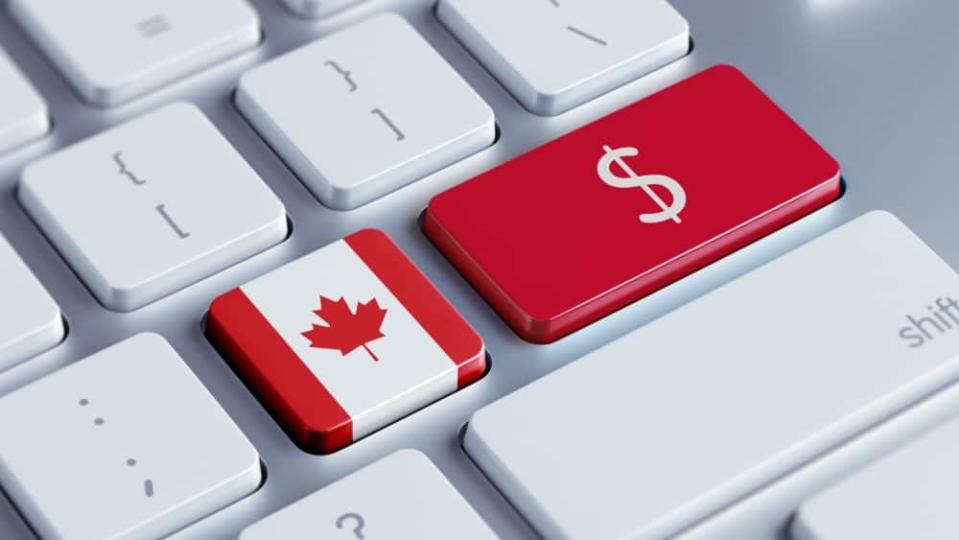How to Fund Your TFSA With RRSP Income

Written by Amy Legate-Wolfe at The Motley Fool Canada
Canadian investors have been trying their best to make as much passive income as possible these days. But that can be difficult when we’re in the midst of economic volatility. The TSX today is still down from all-time highs, and we could experience another market drop come September.
With that in mind, there is certainly a way to start planning and preparing. And it all comes down to one thing. Taxes.
Did you know this about your RRSP?
The Registered Retirement Savings Plan (RRSP) is so much more than just a place to store cash. Certainly, you want to use it to invest in your future retirement. But that’s not all. The RRSP can also be used to save on taxes and use the cash to your advantage.
Let me explain. Each year, you pay income taxes. But Canadians who invest in their RRSP are able to take every dollar they put into their RRSP off of their taxable income for the year. Let me show you by way of example.
Let’s say you’re a Canadian living in Manitoba who is currently making $55,000 per year. You would be taxed 20.5% by the federal government, and 12.75% by the provincial government. However, let’s say you were to invest in an RRSP. Invest enough, and you could bring yourself down to the next tax bracket.
In Manitoba, that tax bracket is at $50,198, and you would be in the 15% tax bracket. This would mean putting aside $4,802 throughout the year, so let’s say $400.17 per month. But now comes the best part.
What you’re saving, and where to put it
If you did not invest in an RRSP, a person making $55,000 in Manitoba would pay about $10,397 in taxes. Remember that amount. Yet, if you were to make $50,197, that drops down to $8,821! So you’re now saving $1,521 in taxes for the year, and have an investment for retirement. You may also qualify for a refund if you’re paying for those taxes throughout the year through work!
Now you could pocket the cash, but instead I would suggest using the refund to your advantage. Put that $1,521 straight into your other savings account. That’s the Tax-Free Savings Account (TFSA). You’re now funding two accounts, creating passive income in the process.
How? Because you’re going to invest that cash into passive income stocks in your TFSA. Ones that you can reinvest in year after year, creating a solid passive income stream.
For example
Let’s say each year you gain about $1,500 back from the government by lowering your income taxes. You now want to put that into a safe dividend paying stock to create passive income. This can be used to help fund future investments, or in case of emergencies. It doesn’t have to be used for retirement as you’re already saving for that.
A top investment choice would be a dividend aristocrat such as Brookfield Renewable Partners LP (TSX:BEP.UN). BEP stock has increased its dividend each year for the last five years, making it a Dividend Aristocrat. It’s also a great investment option as it’s in the renewable energy sector, which continues to receive massive funding both by governments and corporations.
Bottom line
For investors today, it offers a dividend yield at 5.07%, which is well above the five-year average of 4.41%. Here is what that could bring in this year from a $1,500 investment, without including returns.
COMPANY | RECENT PRICE | NUMBER OF SHARES | DIVIDEND | TOTAL PAYOUT | FREQUENCY |
BEP.UN | $36 | 42 | $1.80 | $75.60 | quarterly |
Let’s say you’re able to do this every year. If done over a decade, you’ll have $756 in annual passive income by then! And that’s without returns. So don’t delay and get started on saving for your RRSP, to fund your TFSA through your tax refund.
The post How to Fund Your TFSA With RRSP Income appeared first on The Motley Fool Canada.
Should You Invest $1,000 In Brookfield Renewable Partners?
Before you consider Brookfield Renewable Partners, you'll want to hear this.
Our market-beating analyst team just revealed what they believe are the 5 best stocks for investors to buy in July 2023... and Brookfield Renewable Partners wasn't on the list.
The online investing service they've run for nearly a decade, Motley Fool Stock Advisor Canada, is beating the TSX by 29 percentage points. And right now, they think there are 5 stocks that are better buys.
See the 5 Stocks * Returns as of 7/24/23
More reading
Fool contributor Amy Legate-Wolfe has positions in Brookfield Renewable Partners. The Motley Fool recommends Brookfield Renewable Partners. The Motley Fool has a disclosure policy.
2023

 Yahoo Finance
Yahoo Finance 